After quite a good sleep, I woke up relatively early and had no reason to linger at the guesthouse near the northern part of the Corinth Canal. So, I simply packed my things and continued by car towards ancient Mycenae.
Here is the map showing all the places I visited during my tour of the Peloponnese in September 2023.
While I was standing at a crossroad waiting for my turn to continue, I took a photo of Acrocorinth with a clear idea that I must visit it at the end of my journey.
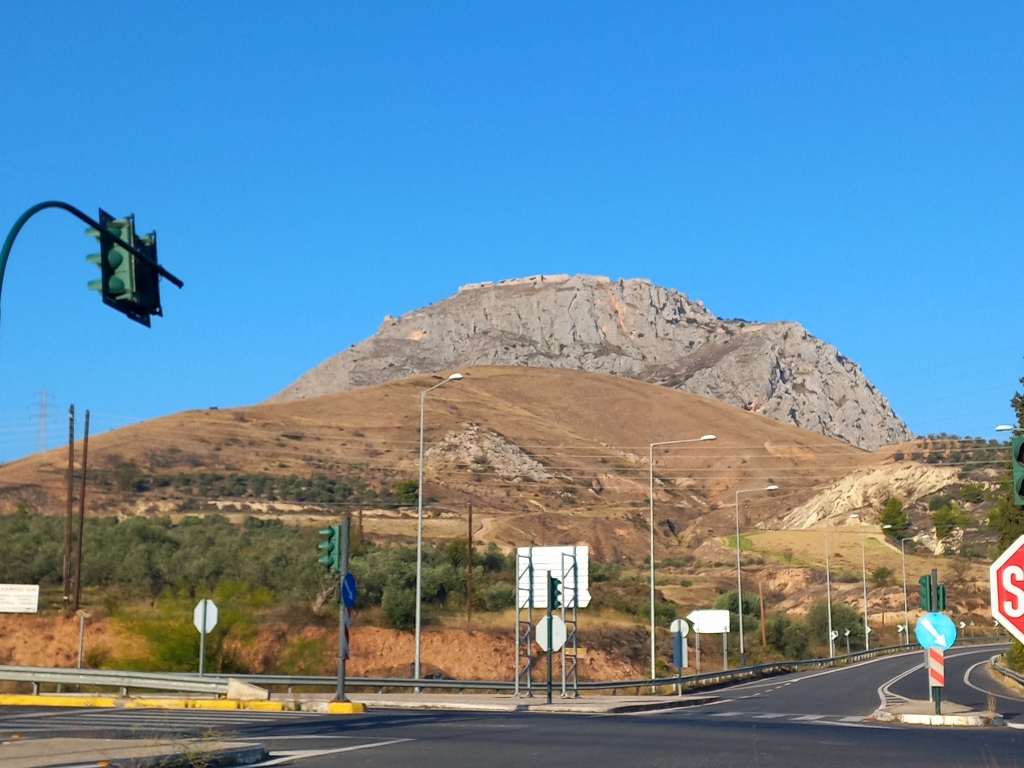 Acrocorinth
Acrocorinth
The archaeological site of Mycenae is about 40 km away from Corinth, so I stopped at a bakery/café along the way where I had a nice breakfast and a coffee to wake up a bit more.
Just before reaching the parking lot for visiting ancient Mycenae, literally half a kilometre before the parking area, the road passes by another must-see place called the Treasury of Atreus or the Tomb of Agamemnon.
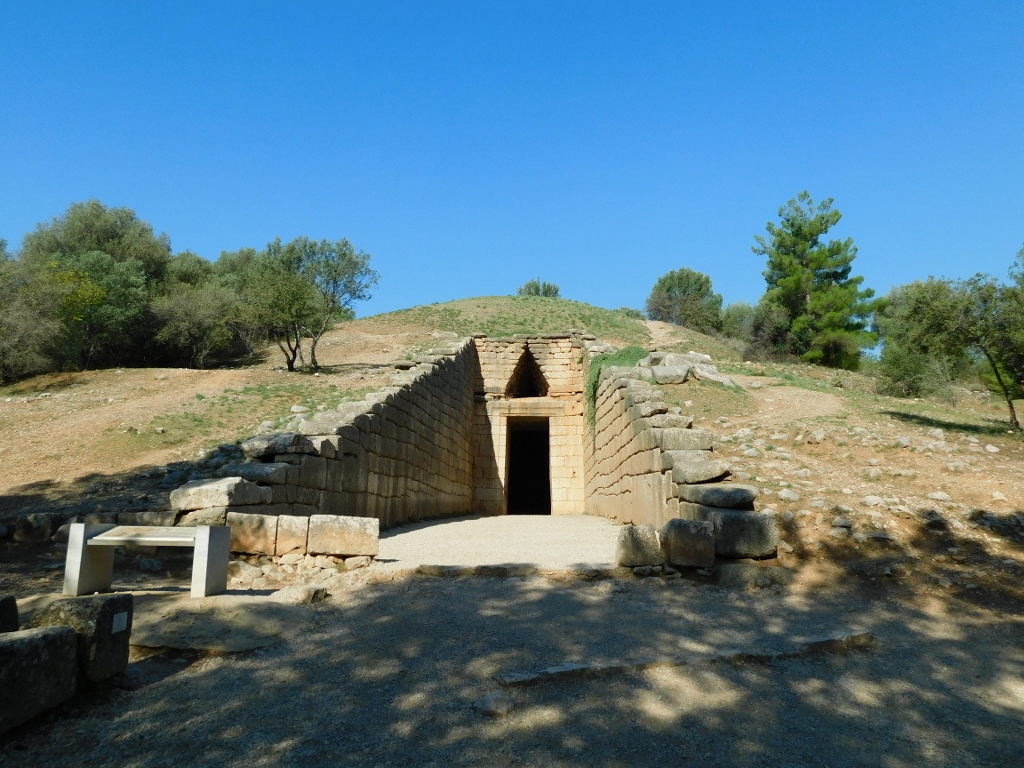 Treasury of Atreus or the Tomb of Agamemnon
Treasury of Atreus or the Tomb of Agamemnon
I think it is necessary now to mention the story of Mycenae and the Trojan War, as this is the best way to get acquainted with these names and concepts. Additionally, this is a story about a visit to Greece, where mythology is always a relevant topic. Also, those interested can read Homer’s “Iliad” or a more contemporary play like “Mourning Becomes Electra” by Eugene O'Neill, as well as numerous historical texts and legends from ancient Greece.
Overall, setting aside the history of ancient Mycenae, which I will elaborate on later, everything began with the gods. Angered at not being invited to a divine wedding, the goddess of discord, Eris, crashed the celebration and tossed an apple onto the table inscribed with the words “to the fairest.” You can imagine the challenge this posed for the vain goddesses. Hera, Athena, and Aphrodite immediately rushed towards the apple, but Zeus, as the supreme god, decided that Paris, the Trojan prince believed to be the most handsome mortal, would judge the matter. This led to the terms “The Judgement of Paris” and “Apple of Discord.” To this day, we cannot be sure if Aphrodite was the fairest, but she was certainly the most cunning, as she bribed Paris by promising him the hand of Helen of Sparta, the wife of Menelaus.
This resulted in Paris abducting Helen and taking her to Troy, which ultimately caused the Trojan War. The Achaeans, as the Greeks were called, were led by Agamemnon, king of Mycenae, who was Menelaus’s brother. Menelaus and Agamemnon were the sons of Atreus, king of Mycenae, which brings me back to my visit to Mycenae and the site known as the Treasury of Atreus or the Tomb of Agamemnon.
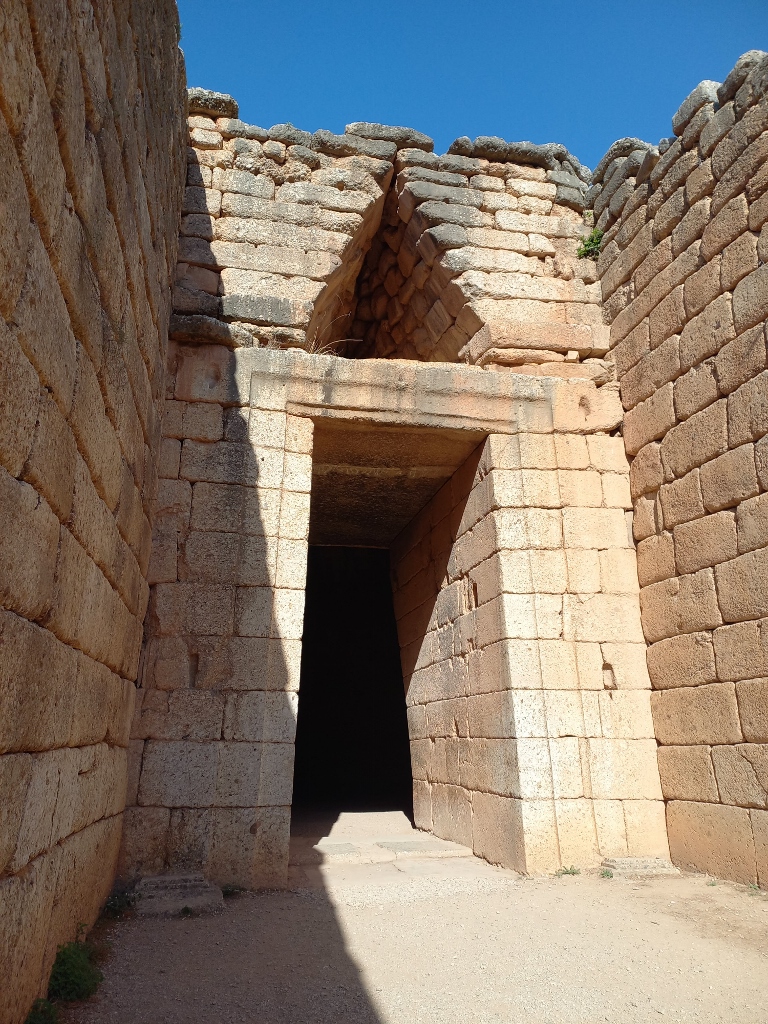 Treasury of Atreus or the Tomb of Agamemnon
Treasury of Atreus or the Tomb of Agamemnon
This is specifically a tholos or a tomb in the shape of an old-style beehive (bell-shaped). The tomb was built between 1350 and 1250 BCE and it consists of a passage, entrance and vaulted chamber.
It is considered one of the most beautiful monuments from Mycenaean architecture, particularly noted for its monumental doorposts and lintel, as well as the expertly cut stone blocks used in its construction. For example, in the case of the lintel, which consists of two massive stone blocks, the part facing inward is carved to follow the curvature of the chamber’s shape.
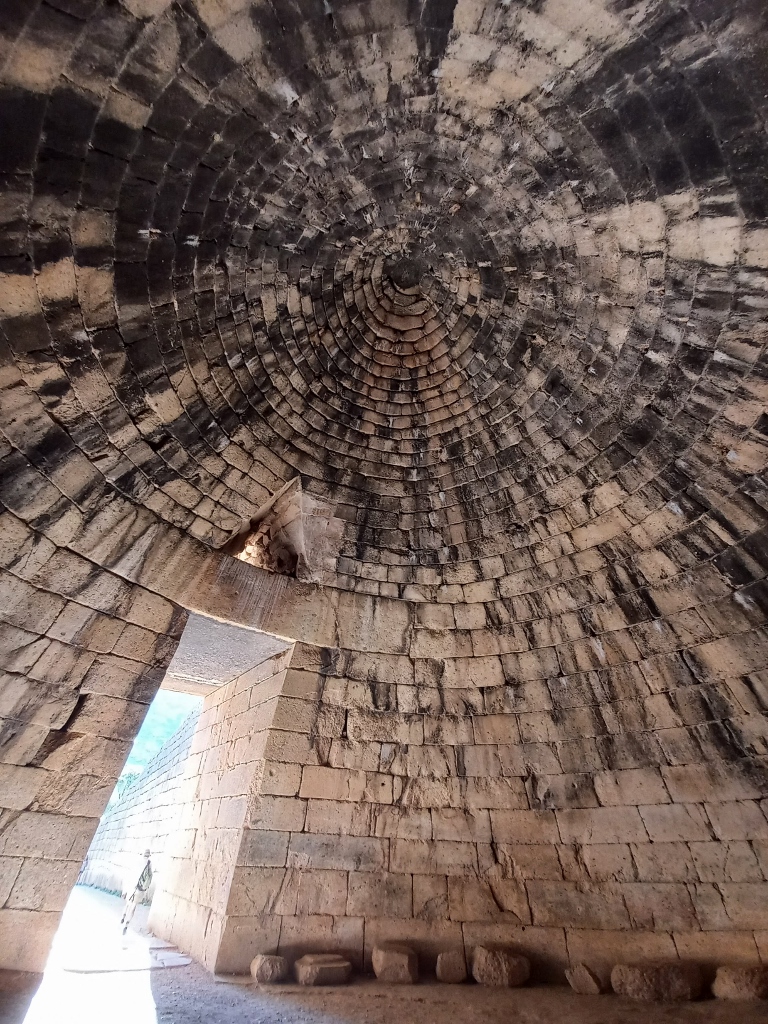 Treasury of Atreus or the Tomb of Agamemnon
Treasury of Atreus or the Tomb of Agamemnon
To convey the impressiveness of this structure, here is a photo from 2013 where I am standing at the entrance. I am 1.81 m tall.
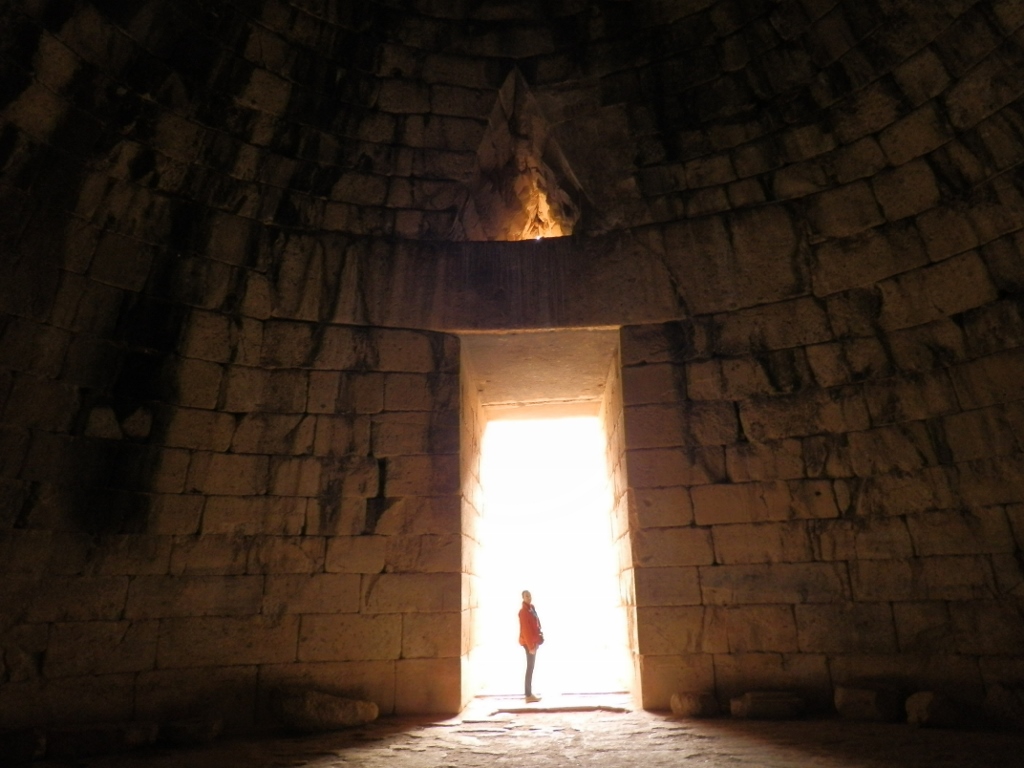 Treasury of Atreus or the Tomb of Agamemnon
Treasury of Atreus or the Tomb of Agamemnon
The entrance door is 5.40 m high, while the conical chamber itself reaches a height of 13.39 m, with a base width of 14.60 m. Inside the chamber, there is another door, 2.5 m high, leading to a smaller room that is carved into the rock.
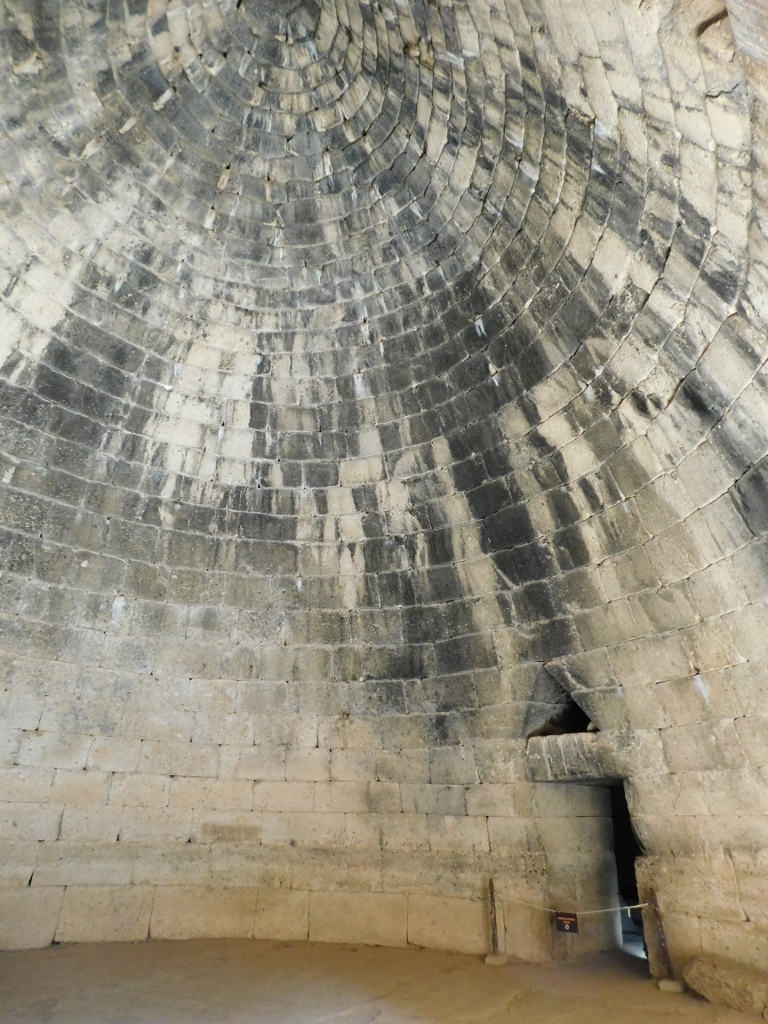 Treasury of Atreus or the Tomb of Agamemnon
Treasury of Atreus or the Tomb of Agamemnon
By the way, all explorations have been fruitless and no artefacts or earthly remains have ever been found here. On the other hand, the tomb has always been visible, meaning it was never buried underground, so this is not surprising.
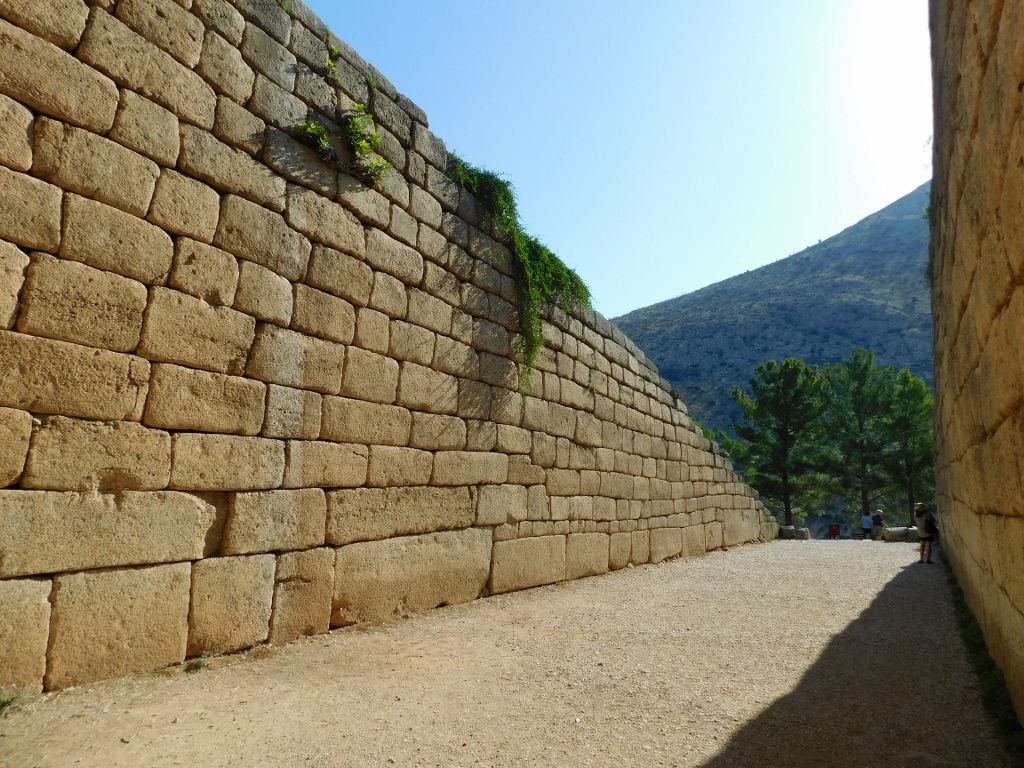 Treasury of Atreus or the Tomb of Agamemnon
Treasury of Atreus or the Tomb of Agamemnon
From the area in front of the tomb, the ruins of ancient Mycenae can be clearly seen on the neighbouring rocky hill.
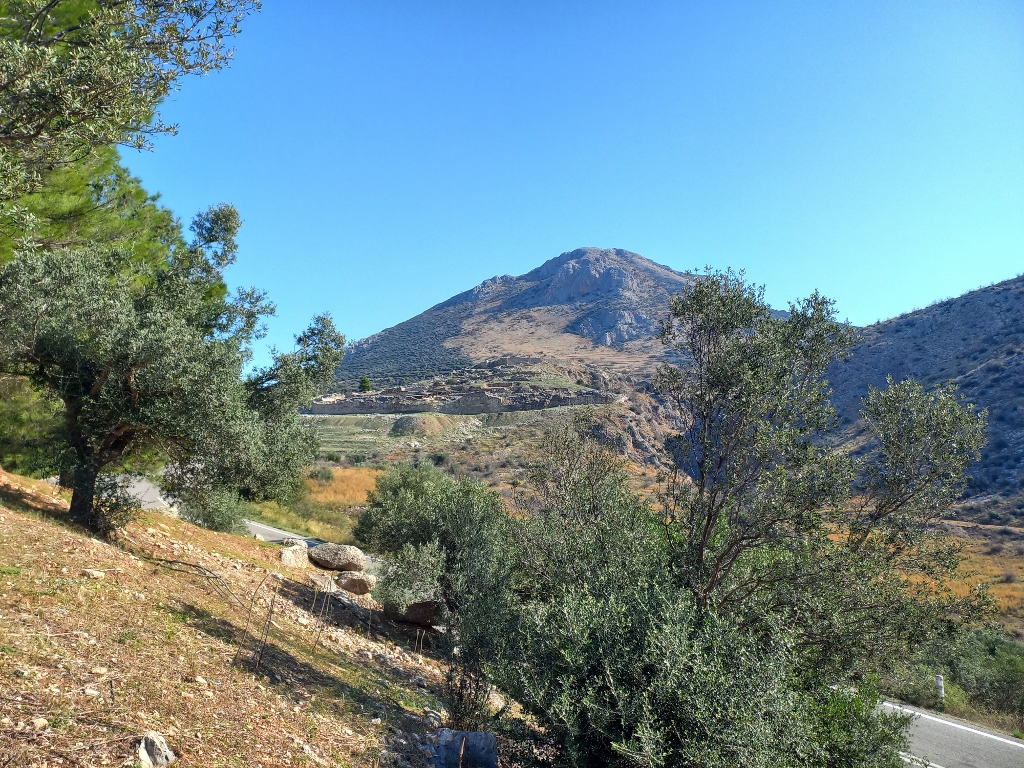 View at the ancient Mycenae
View at the ancient Mycenae
Now I just transferred to the previously mentioned parking area and first took a look at the landscapes surrounding this significant archaeological site.
 Surroundings of the ancient Mycenae
Surroundings of the ancient Mycenae
Ancient Mycenae was the centre of the Mycenaean civilization, which dominated the eastern Mediterranean from 1600 to 1100 BCE and served as a precursor to the classical Greek culture, which in turn had a profound influence on later European and, consequently, global culture in the broadest sense. Together with the city of Tiryns, which belongs to the same civilization and time period, it has been inscribed on the UNESCO’s World Heritage List as the Archaeological Sites of Mycenae and Tiryns. Both sites are located in north-eastern Peloponnese within the regional unit of Argolis and I visited both of them on this day.
What highlights the Mycenaean culture are its technical and artistic achievements, as well as monumental architecture and impressive artefacts. It is also within this civilization that the first versions of the Greek language appeared and it was a culture that inspired Homer to write his famous works – the previously mentioned “Iliad,” as well as the “Odyssey.”
According to the legend, Mycenae was founded by one of the greatest Greek heroes, Perseus, who built the fortress with the help of Cyclopes, the one-eyed giants. However, research has shown that the oldest part of the city, the acropolis, was fortified in the early 15th century BCE, while the entire fortress was later strengthened in the “Cyclopean” style around 1350 BCE. According to the modern classification of ancient periods, Mycenae existed during the Bronze Age and it represents the most important and richest palatial centre in Greece from that era.
Due to its exceptional strategic position, this significant military stronghold dominated a large part of southern Greece during its time. Until the end of the 12th century BCE, when the city was destroyed by Dorian invaders, Mycenae was the wealthiest and most powerful state in the Mediterranean, with close ties to Crete. I have previously mentioned that it was the Mycenaean civilization that essentially took over from the Minoan civilization (see: https://www.svudapodji.com/en/crete-2/ and on).
By the way, the reason for involving Cyclopes into human creations was that the stone blocks were so massive that it was believed humans could not construct such buildings on their own.
Thus, at the main entrance into the Mycenaean citadel, one immediately encounters the famous Lion Gate.
 Lion Gate in Mycenae
Lion Gate in Mycenae
On the one hand, there is the monumental lintel, doorposts and a threshold that is largely concealed by the wooden access path. However, the gate is named for the impressive triangular piece of stone featuring carved lions, positioned above the lintel. The heads of the lions have not survived to this day, but this does not diminish the beauty of the relief or the impressiveness of its craftsmanship and installation. This is also the oldest monumental relief in Europe.
 Lion Gate in Mycenae
Lion Gate in Mycenae
The gate was constructed around 1240 BCE and double doors were previously installed there.
The impression is no less striking when viewed from the inside. It is truly hard to imagine that people built and positioned these massive stone blocks over 3,000 years ago.
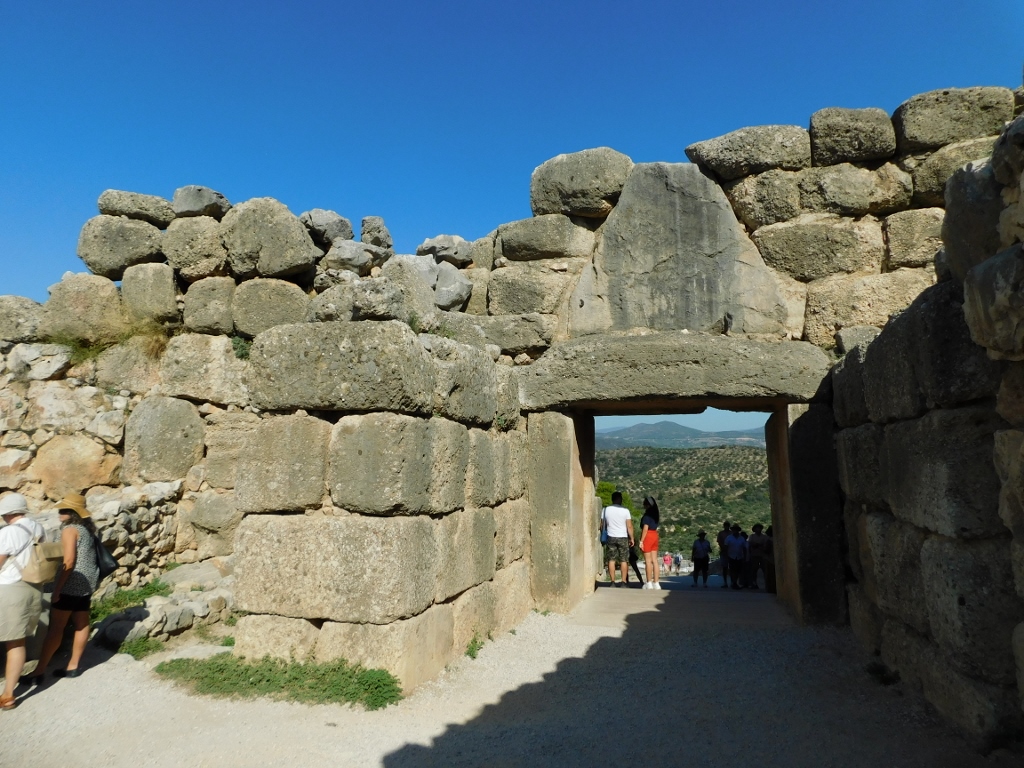 Lion Gate in Mycenae
Lion Gate in Mycenae
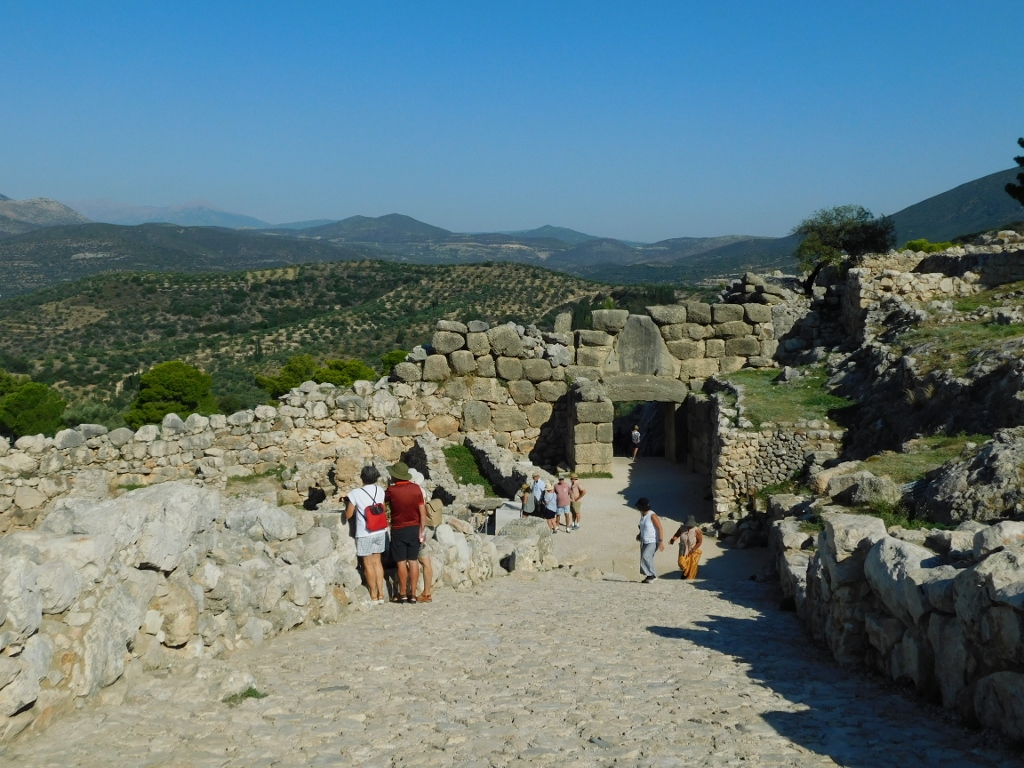 Lion Gate in Mycenae
Lion Gate in Mycenae
Upon entering the area of ancient Mycenae, immediately to the right is Grave Circle A. This is part of a large cemetery that was used during the early days of Mycenae’s existence, but from the 16th century BCE onward, this space was exclusively reserved for royal burials. Originally, Grave Circle A was located outside the fortress walls, but as the citadel expanded, it was eventually encompassed by the new ramparts.
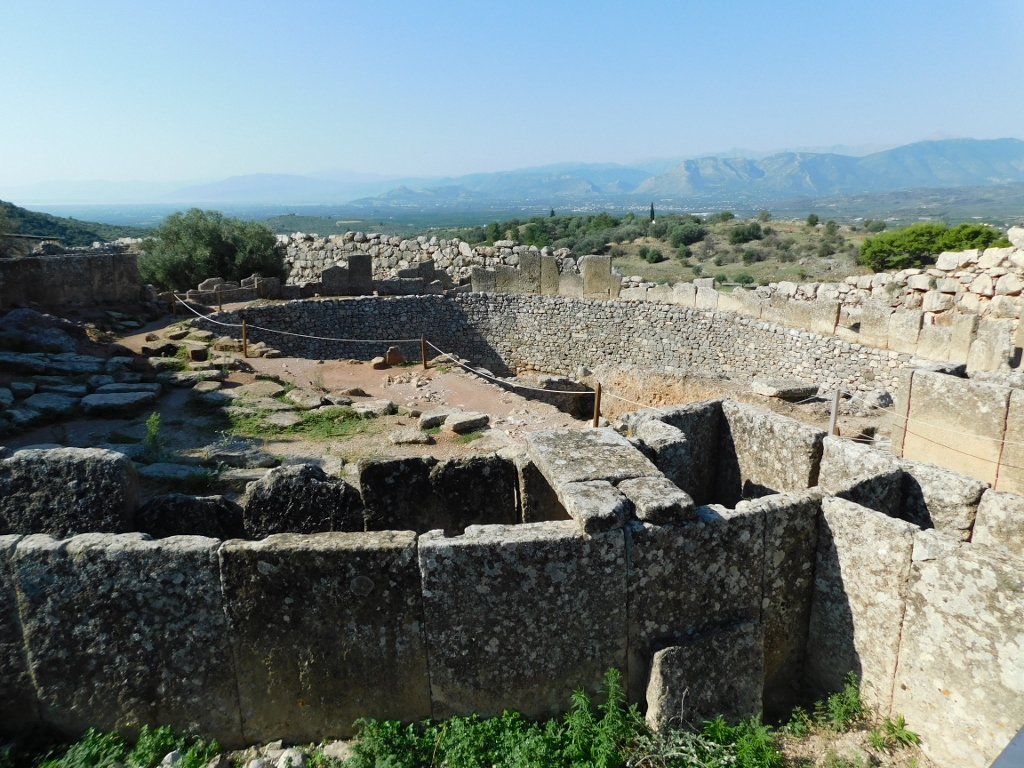 Grave Circle A
Grave Circle A
The main researcher of ancient Mycenae was Heinrich Schliemann (1822-1890), who excavated five out of the six royal tombs here in 1876. During this excavation, he uncovered not only human remains, but also extremely rich grave goods that can now be seen in the National Archaeological Museum in Athens.
Certainly one of the most famous artefacts is the Mask of Agamemnon, a replica of which can be seen in the museum located at the site of ancient Mycenae.
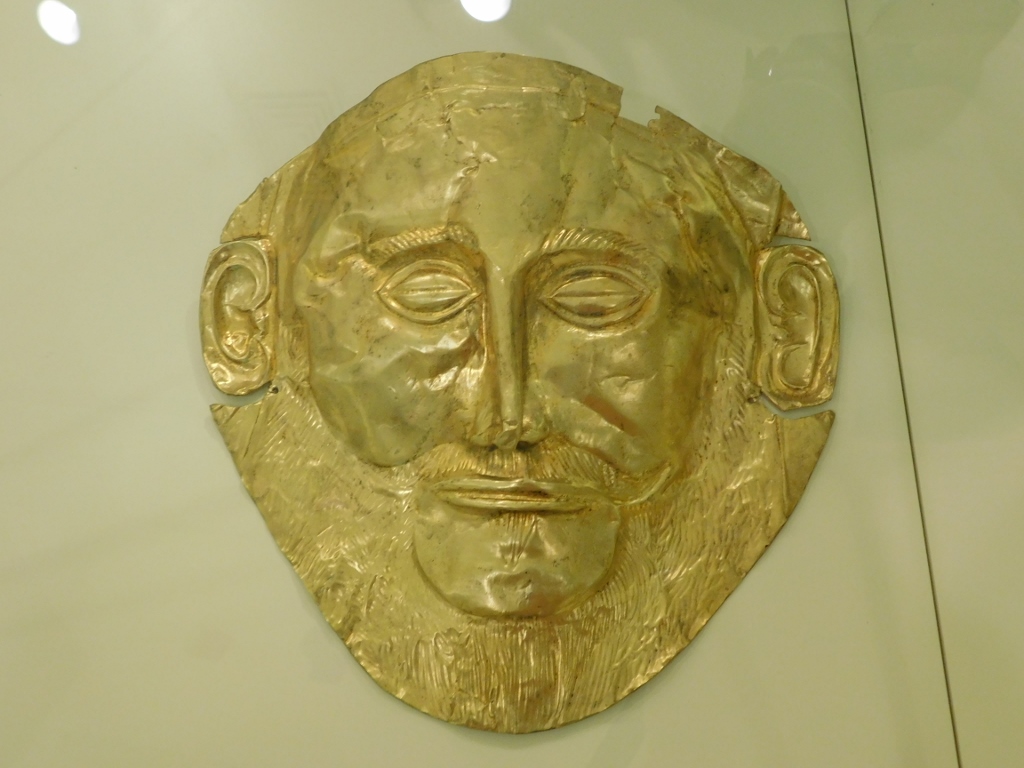 Mask of Agamemnon
Mask of Agamemnon
Schliemann believed he had found the body and death mask of King Agamemnon himself, but research has shown that the mask was made around the 16th century BCE, which would be approximately 300-400 years before the presumed time of the Trojan War.
When looking southwest from the elevation above Grave Circle A, various mountains can be seen, with the one in the foreground being referred to as the “Sleeping Agamemnon.”
 View from the direction of ancient Mycenae
View from the direction of ancient Mycenae
At least that was what the guide said when I was here for the first time over 20 years ago. At that time, I photographed those mountains and due to the position of the sun, the silhouette of the mountains was even more pronounced.
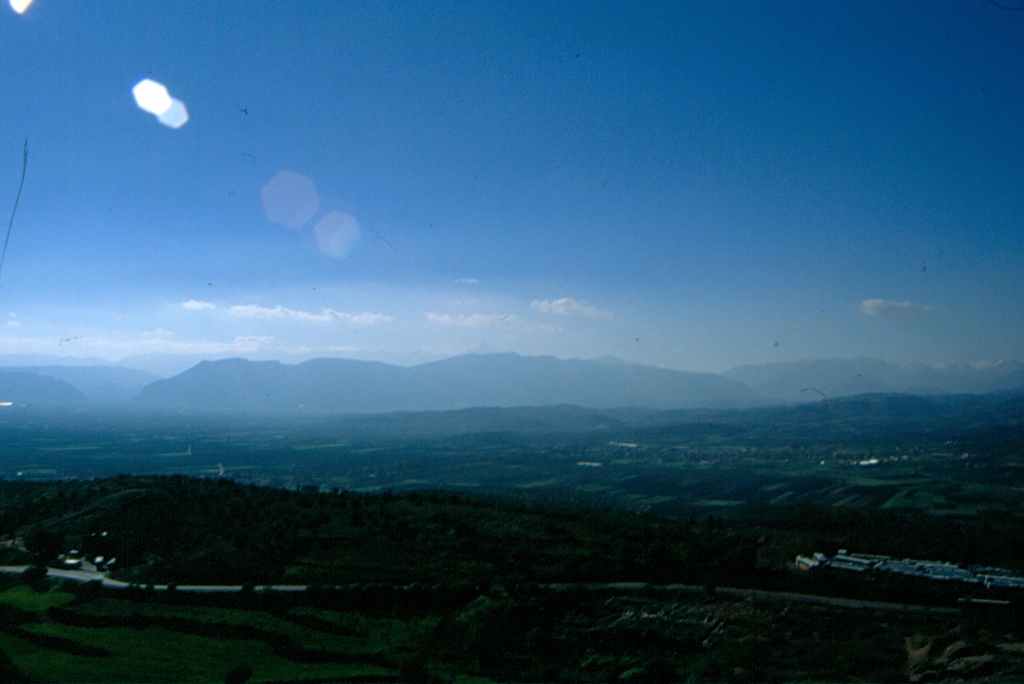 View from the direction of ancient Mycenae and the silhouette of the “Sleeping Agamemnon”
View from the direction of ancient Mycenae and the silhouette of the “Sleeping Agamemnon”
After this, the visit to the site involves following a path that ascends to the remains of the palace within the acropolis and continues towards the Eastern Spur, before returning along a different route parallel to the northern ramparts.
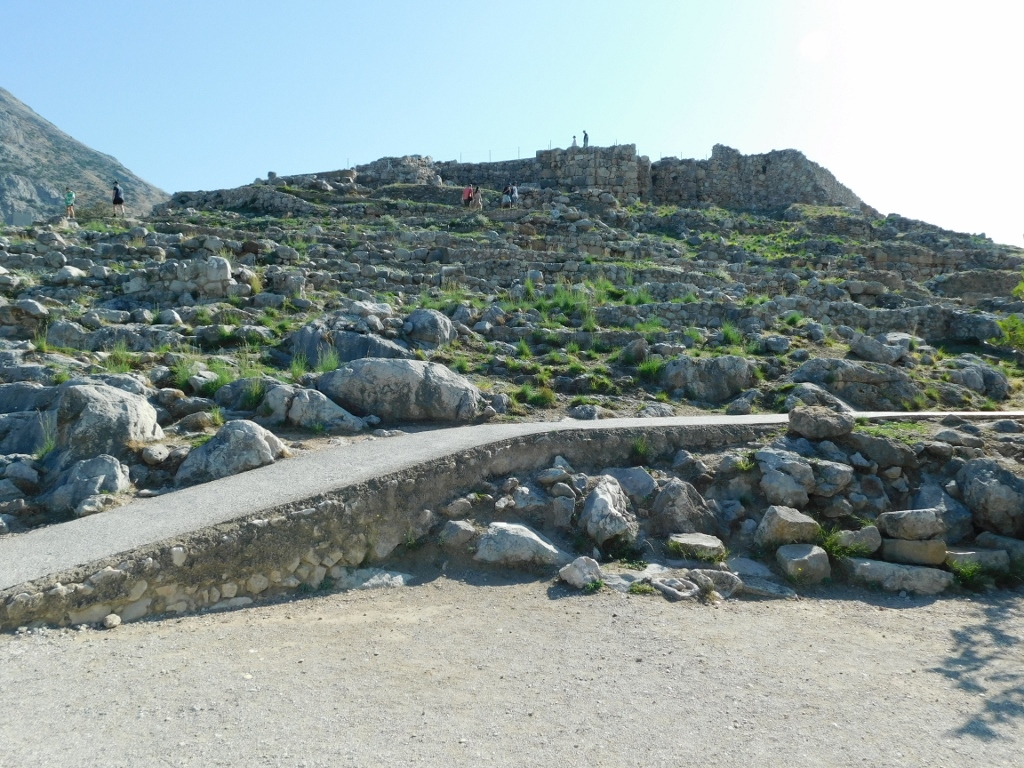 Ancient Mycenae archaeological site
Ancient Mycenae archaeological site
First, you come across the remains of the main entrance to the palace, but today only the bases of two columns can be seen.
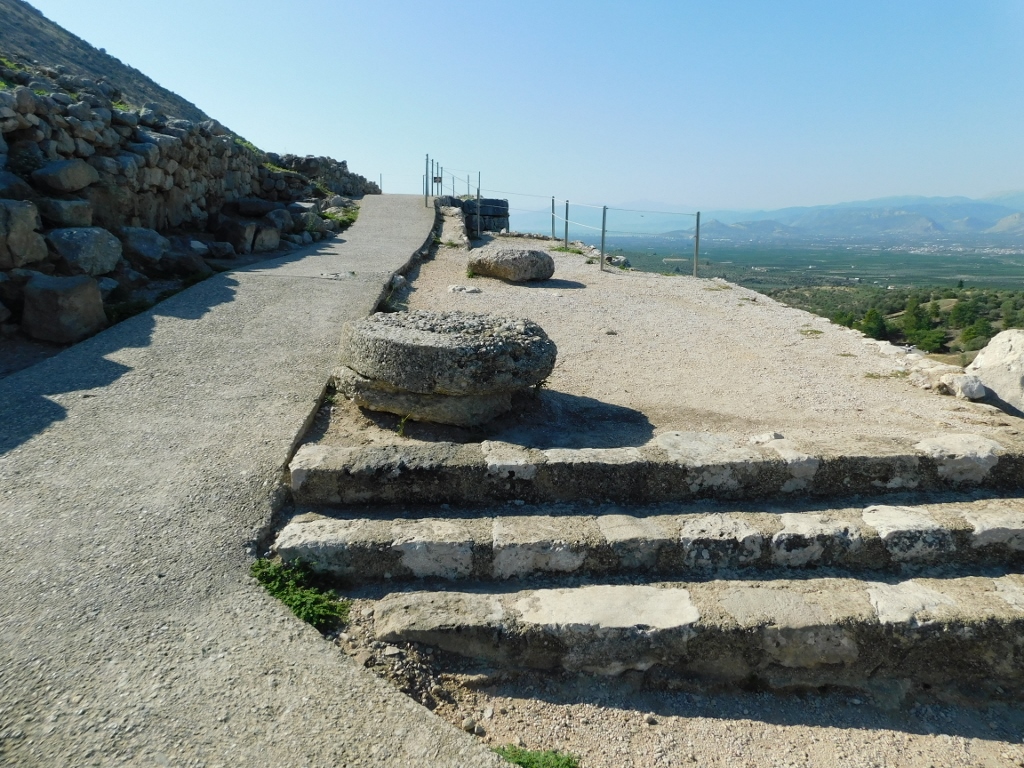 Ancient Mycenae archaeological site
Ancient Mycenae archaeological site
The palace itself was built on the top of the hill in the 15th century BCE, although evidence has been found that a human settlement existed at the site since the 3rd millennium BCE. On the other hand, after the destruction of Mycenae in the late 13th century, this place was not completely abandoned and findings suggest that smaller temples were constructed here even up to the 3rd century BCE.
 Ancient Mycenae archaeological site
Ancient Mycenae archaeological site
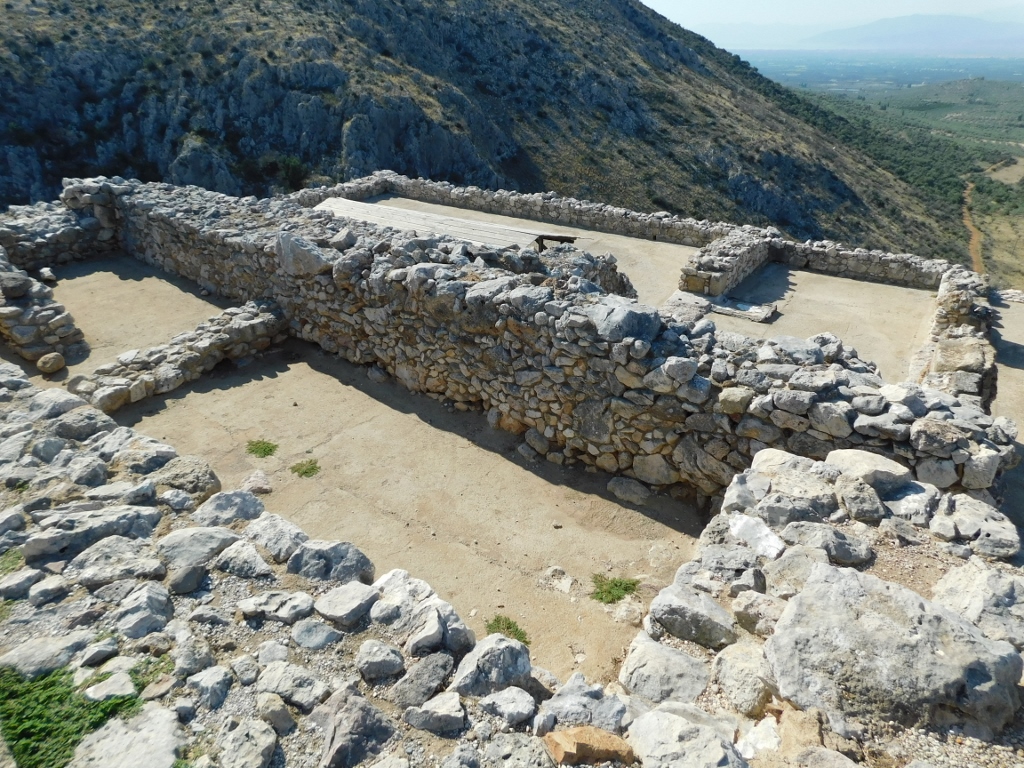 Ancient Mycenae archaeological site
Ancient Mycenae archaeological site
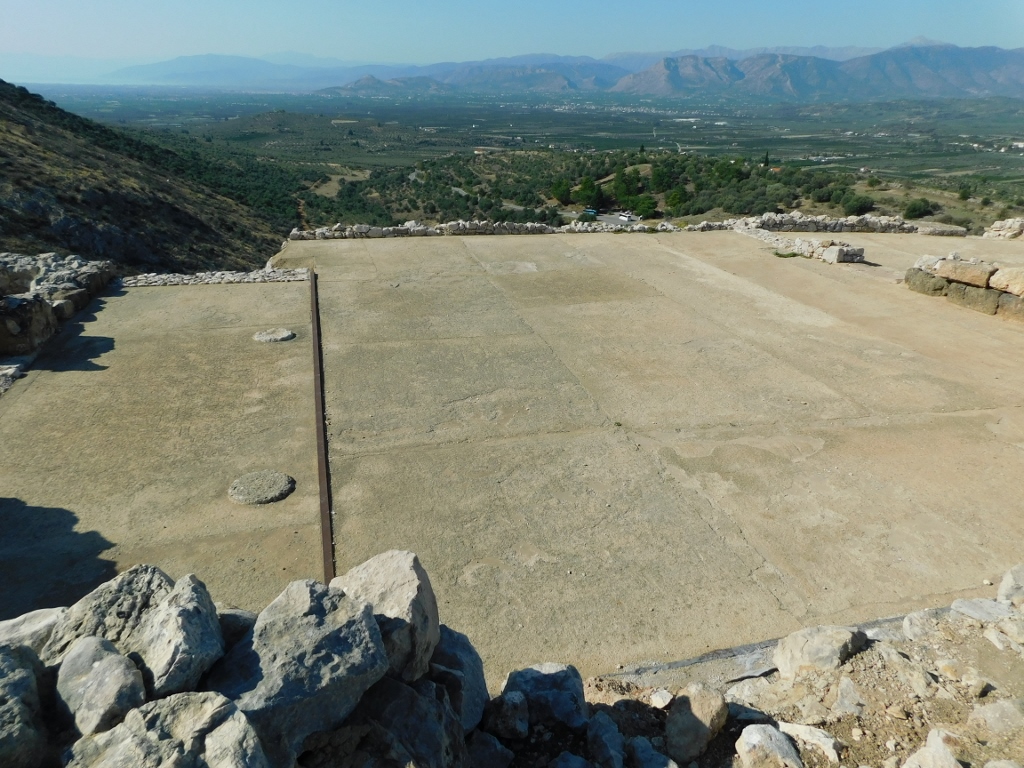 Ancient Mycenae archaeological site
Ancient Mycenae archaeological site
Within the site, you can also see the remains of those smaller temples from “historical times,” as well as a workshop quarter, a colonnaded house, storage facilities and various other parts of the fortress. I think the best way for visitors is to simply stroll around and enjoy the sights as they are.
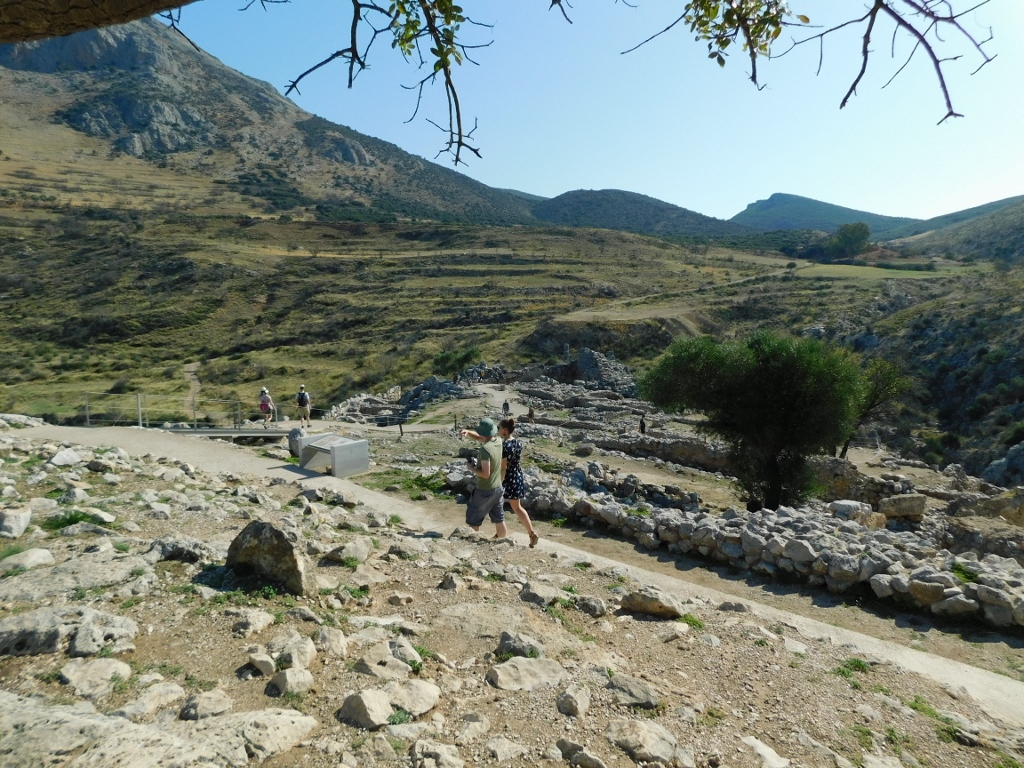 Ancient Mycenae archaeological site
Ancient Mycenae archaeological site
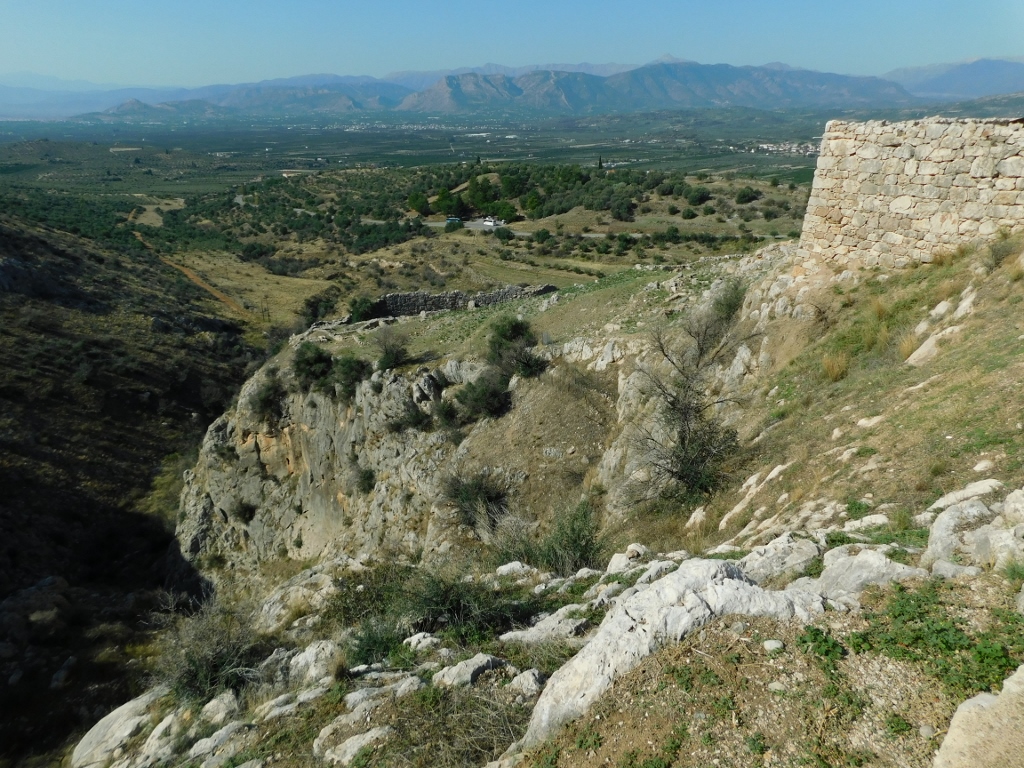 Ancient Mycenae archaeological site
Ancient Mycenae archaeological site
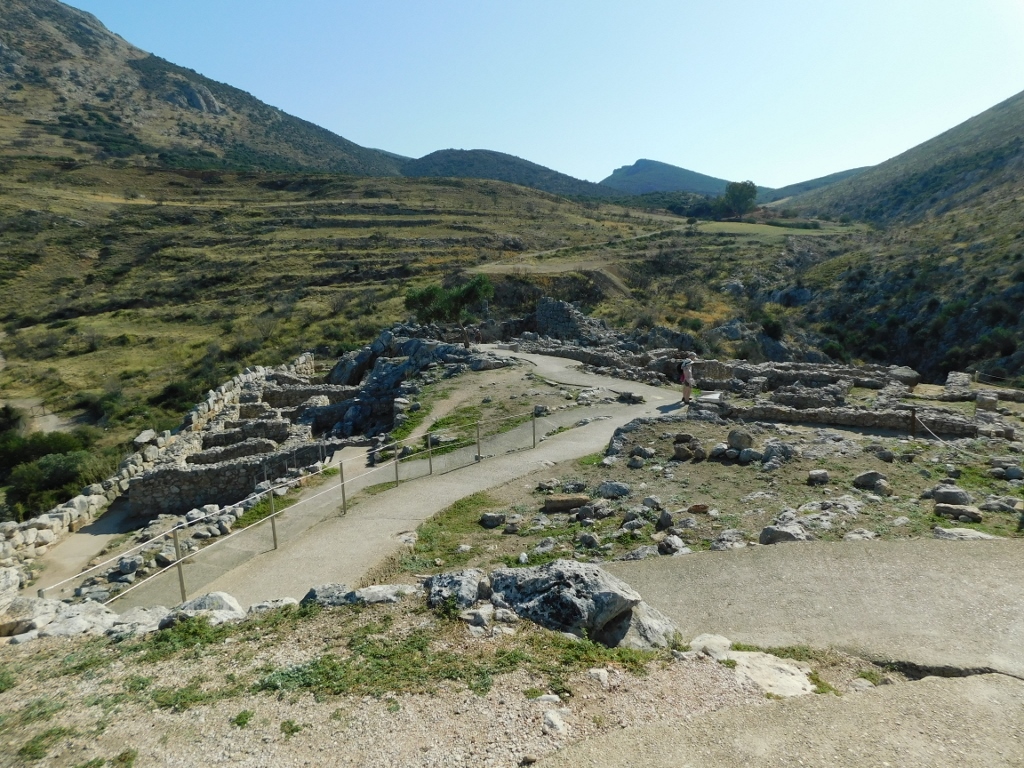 Ancient Mycenae archaeological site
Ancient Mycenae archaeological site
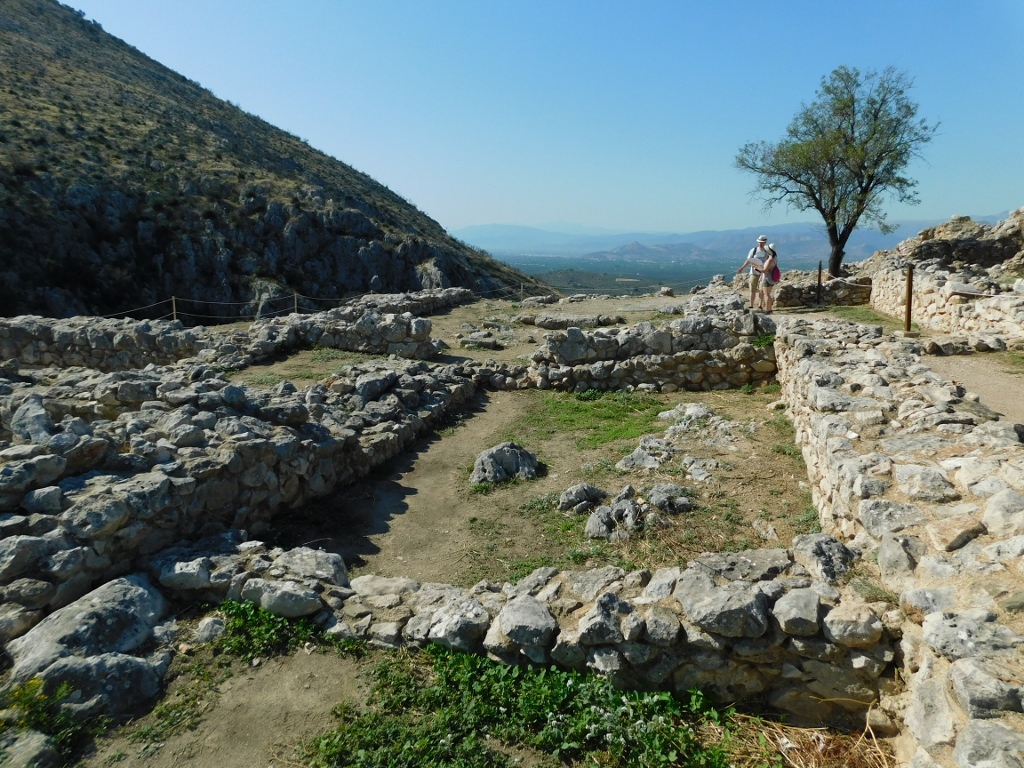 Ancient Mycenae archaeological site
Ancient Mycenae archaeological site
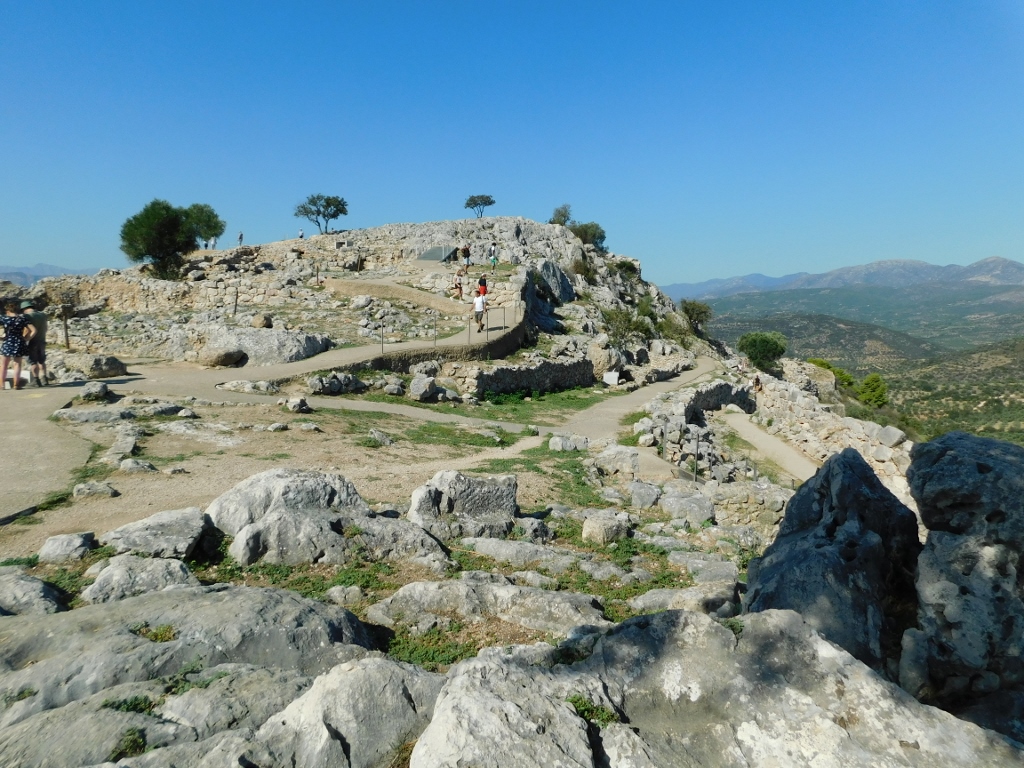 Ancient Mycenae archaeological site
Ancient Mycenae archaeological site
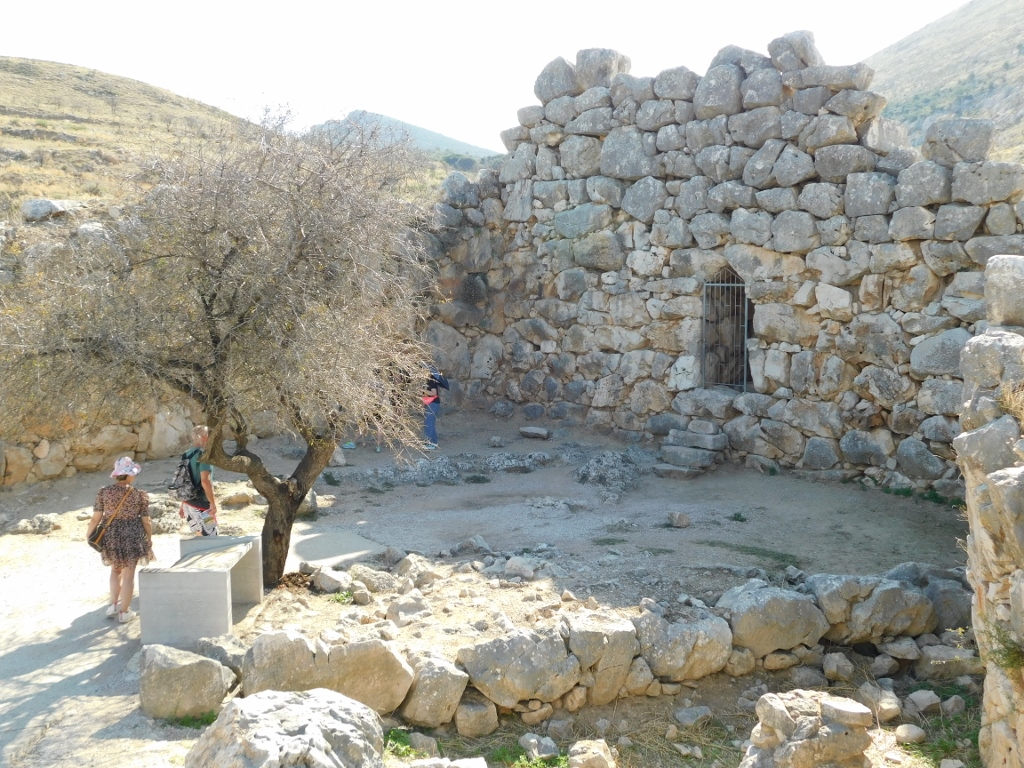
Ancient Mycenae archaeological site
Still, I found it particularly interesting to take a closer look at the area where an underground cistern is located, specifically where a corridor leads to it. This cistern was a true architectural masterpiece, as it began within the fortress, passed through the fortifications and continued underground outside the stronghold. The purpose was to ensure a constant water supply from natural sources.
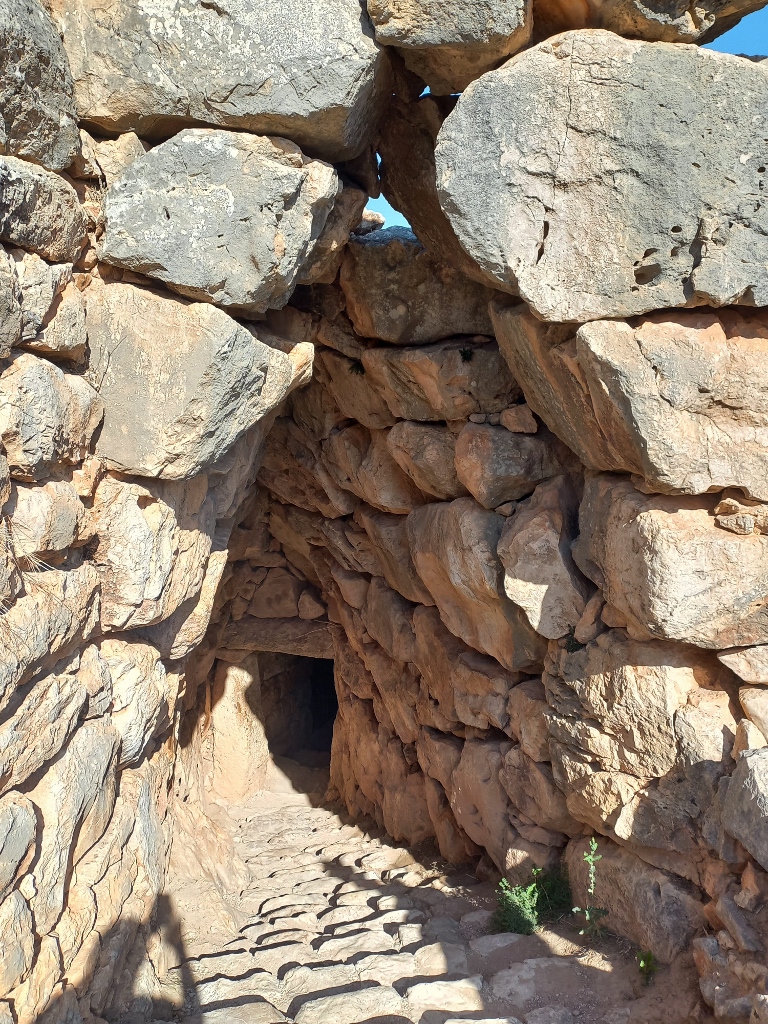
Ancient Mycenae archaeological site
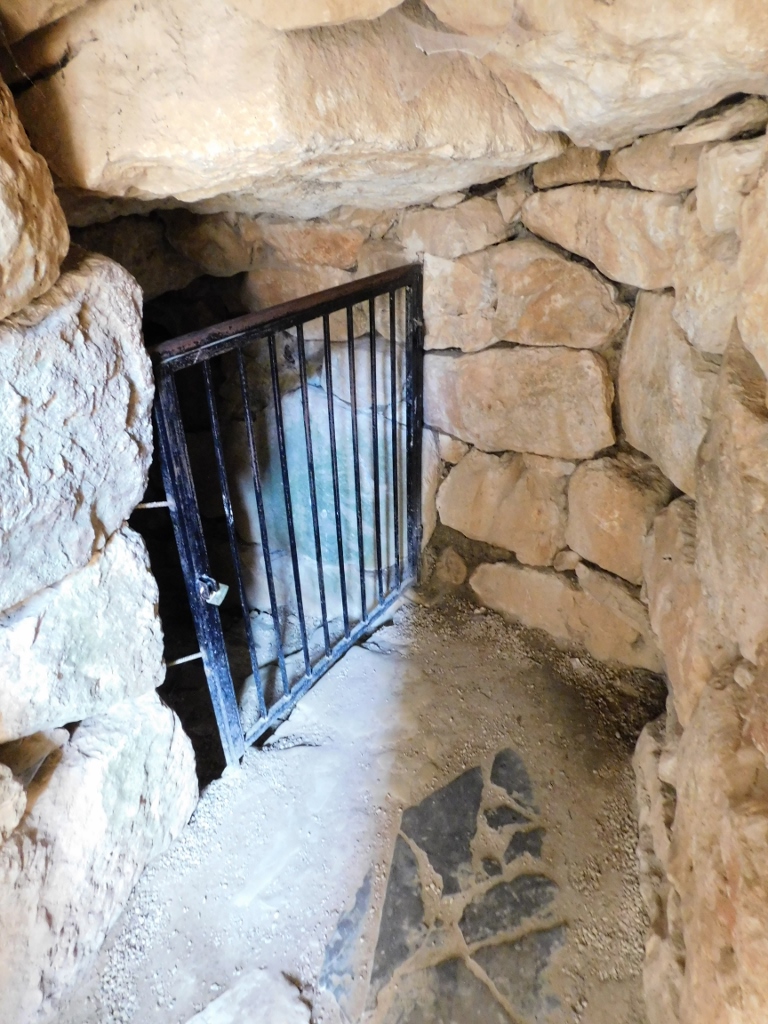 Ancient Mycenae archaeological site
Ancient Mycenae archaeological site
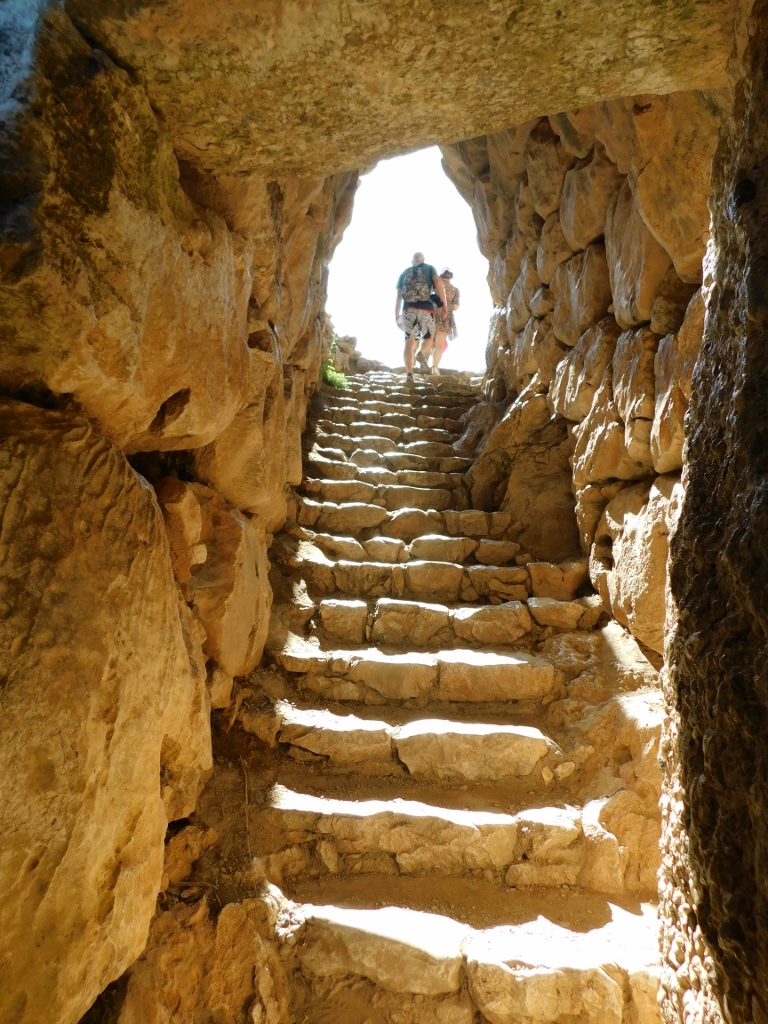 Ancient Mycenae archaeological site
Ancient Mycenae archaeological site
On the way back, I followed the path along the northern ramparts, passing through the North (Postern) Gate. This gate is also extremely impressive and was built around 1250 BCE.
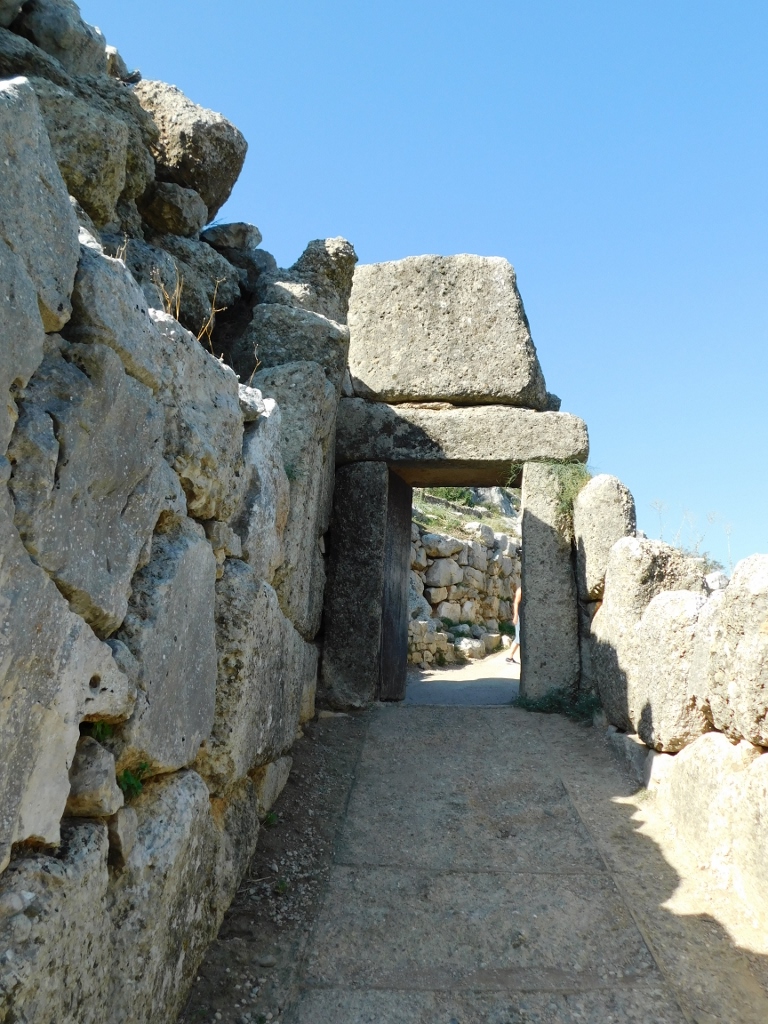 Ancient Mycenae archaeological site
Ancient Mycenae archaeological site
The northern side as well offers a very beautiful view and I wondered if Electra could have enjoyed such a lovely sight. There were certainly olive trees in her time as well.
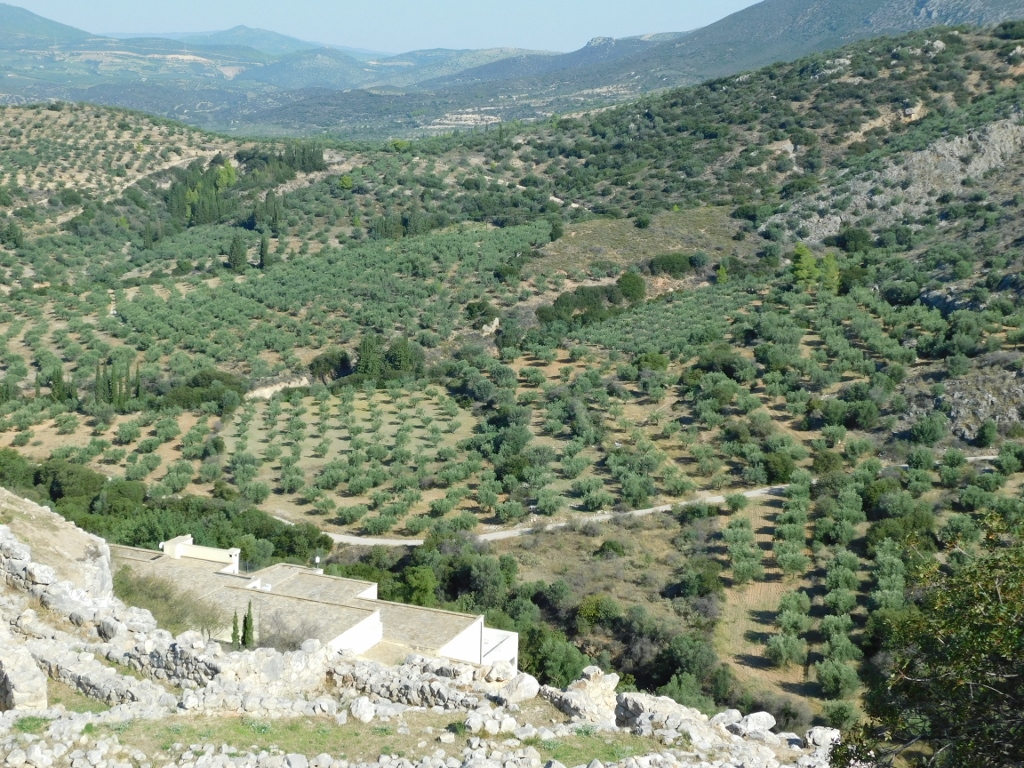 Ancient Mycenae archaeological site
Ancient Mycenae archaeological site
Finally, I passed through the Lion Gate once more and then headed towards the museum.
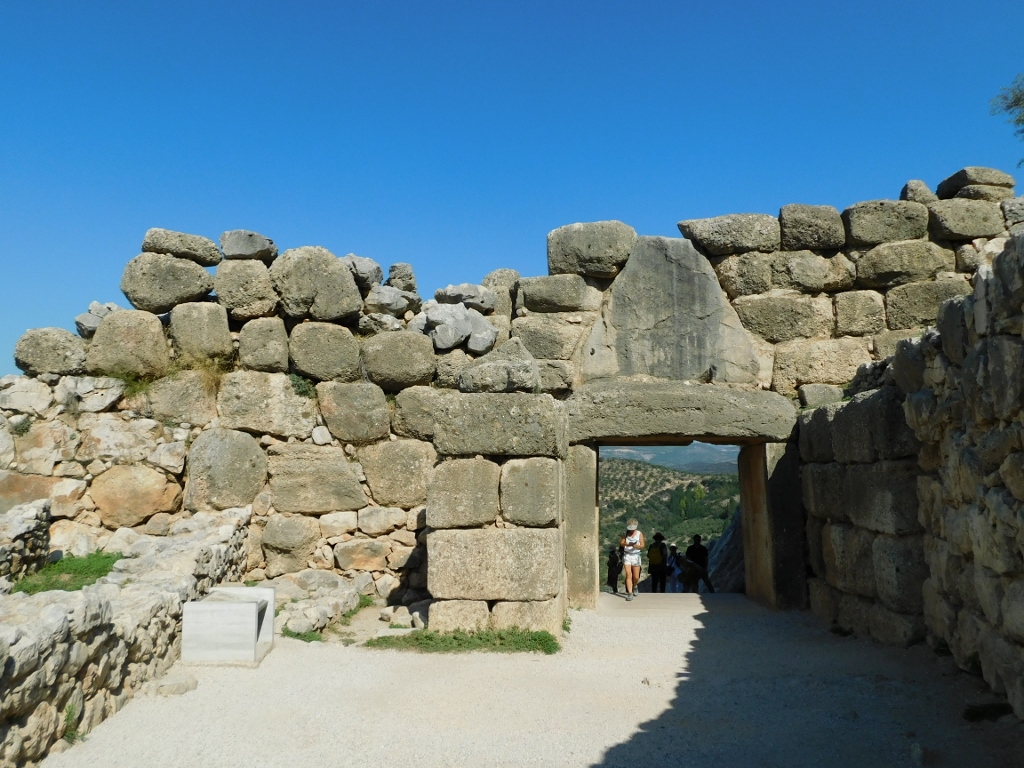 Ancient Mycenae archaeological site
Ancient Mycenae archaeological site
The Archaeological Museum of Mycenae isn’t very large, but it’s quite lovely and features beautiful examples of pottery that have survived from ancient times. For instance, there are female figurines from the 11th century BCE and anthropomorphic figures from the 13th-12th centuries BCE.
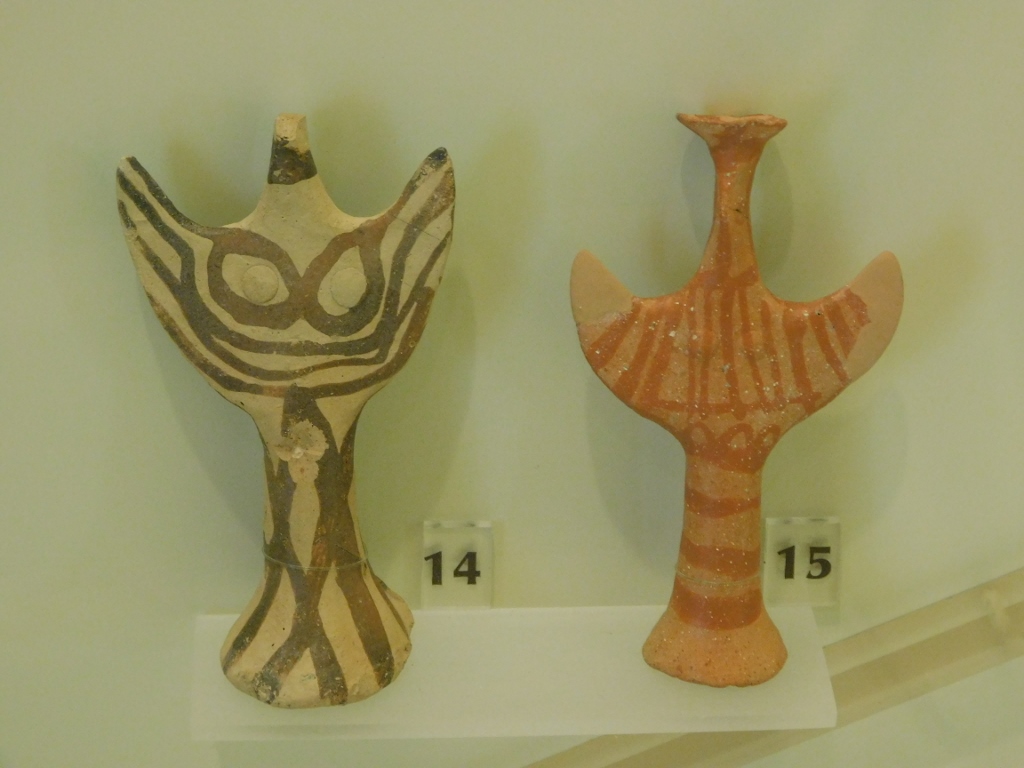 The Archaeological Museum of Mycenae
The Archaeological Museum of Mycenae
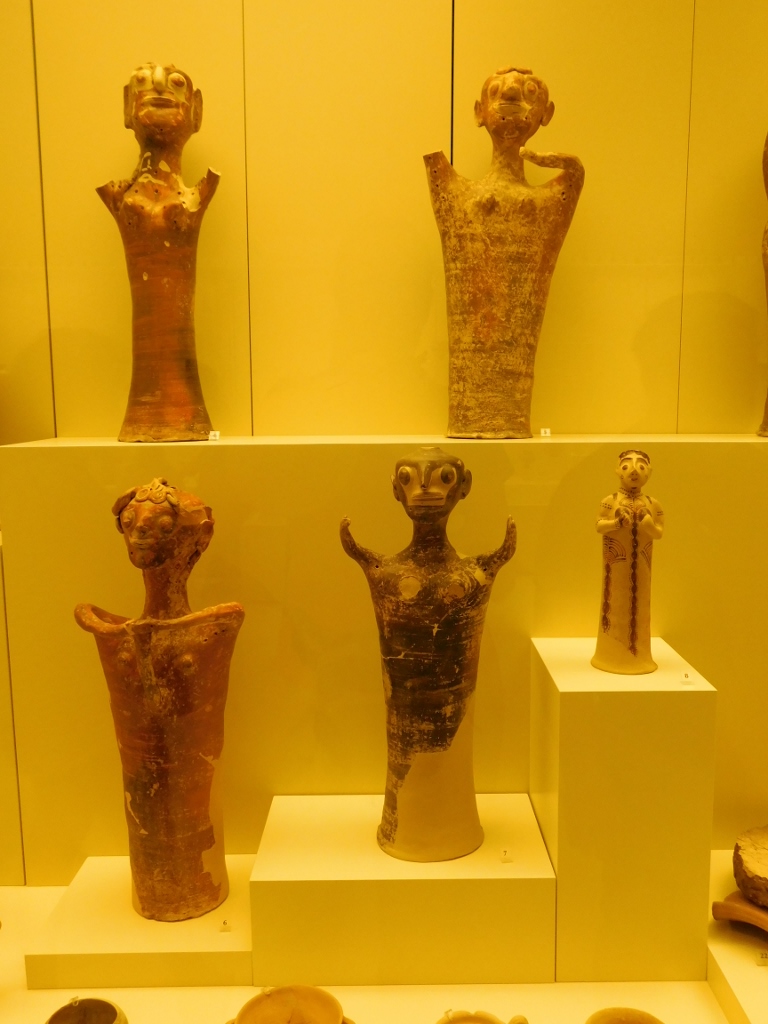 The Archaeological Museum of Mycenae
The Archaeological Museum of Mycenae
I particularly enjoyed the vessels, such as the pottery from the first half of the 13th century BCE, and there were also gold items (replicas) that were discovered during the excavations.
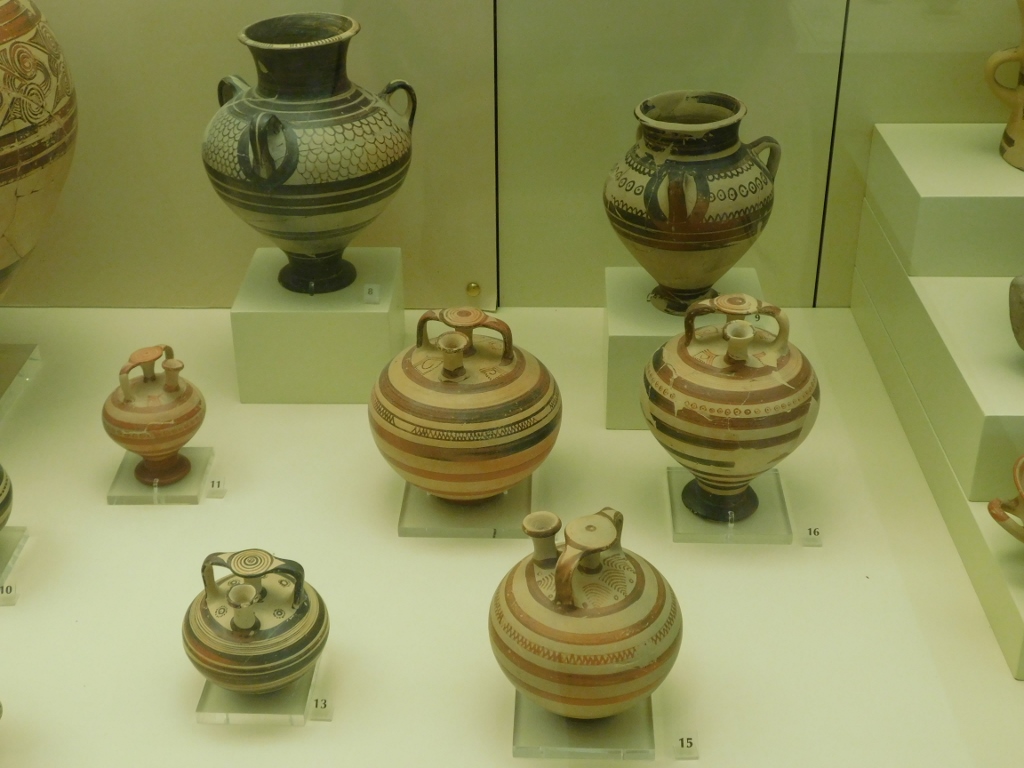 The Archaeological Museum of Mycenae
The Archaeological Museum of Mycenae
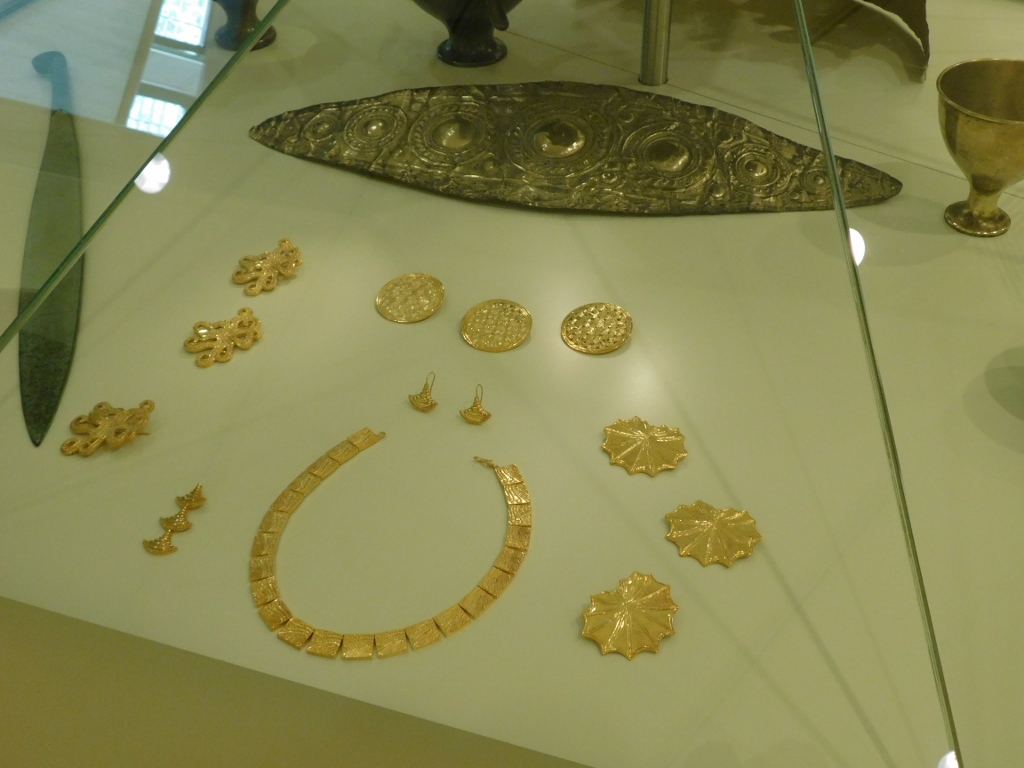 The Archaeological Museum of Mycenae
The Archaeological Museum of Mycenae
On my way back to the parking area, I also passed by the Lion Tomb that is missing its upper part, but the base can be clearly seen from above.
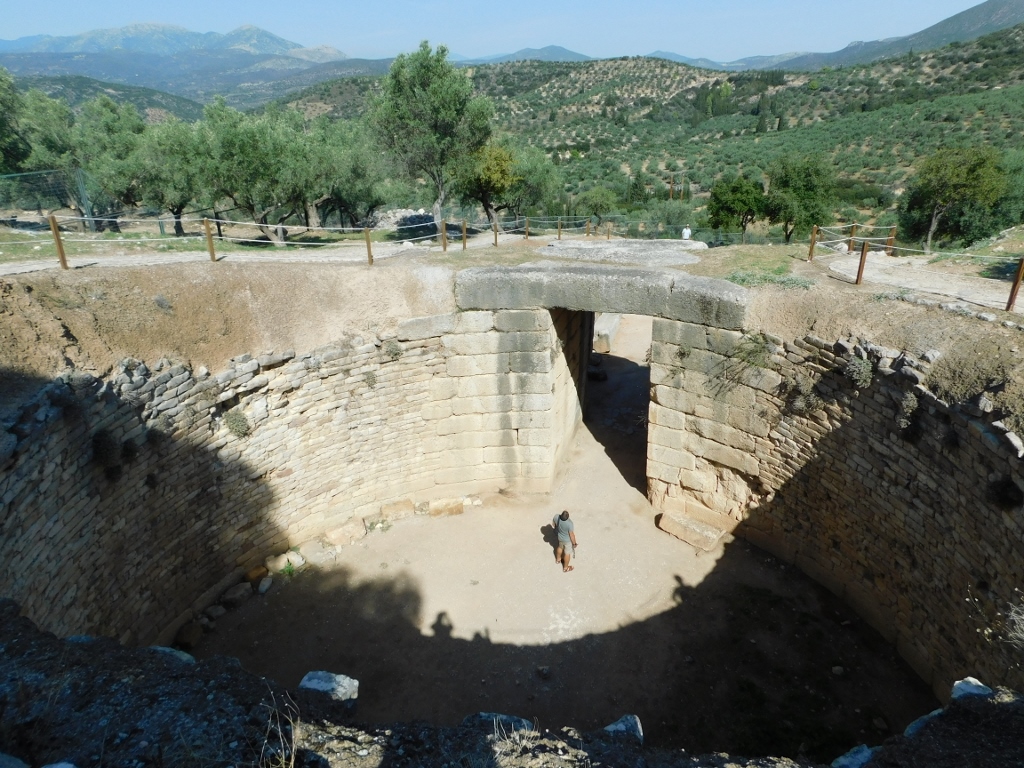 Ancient Mycenae archaeological site
Ancient Mycenae archaeological site
During my visit to Mycenae, I suddenly felt weak at one point. It didn’t surprise me; this often happens to me – I get exhausted at home from too many obligations and tasks, then I start to relax on a trip and my body needs some time to regain balance. An additional issue was that I had been slightly dehydrated the day before, so I needed to compensate for that. In any case, I was able to function, but I was aware of my weakness, so I was particularly mindful.
Fortunately, I had already bought a large bottle of water, which I nearly finished, along with a refreshing drink that (I think) contained caffeine, and that helped to keep me going.
In that state, I drove to Argos. I thought about visiting the Larisa Citadel, located on a hill above the city, on top of which the museum in Argos is also worth the visit, but I still decided to focus on the most significant parts and in Argos, that is the theatre.